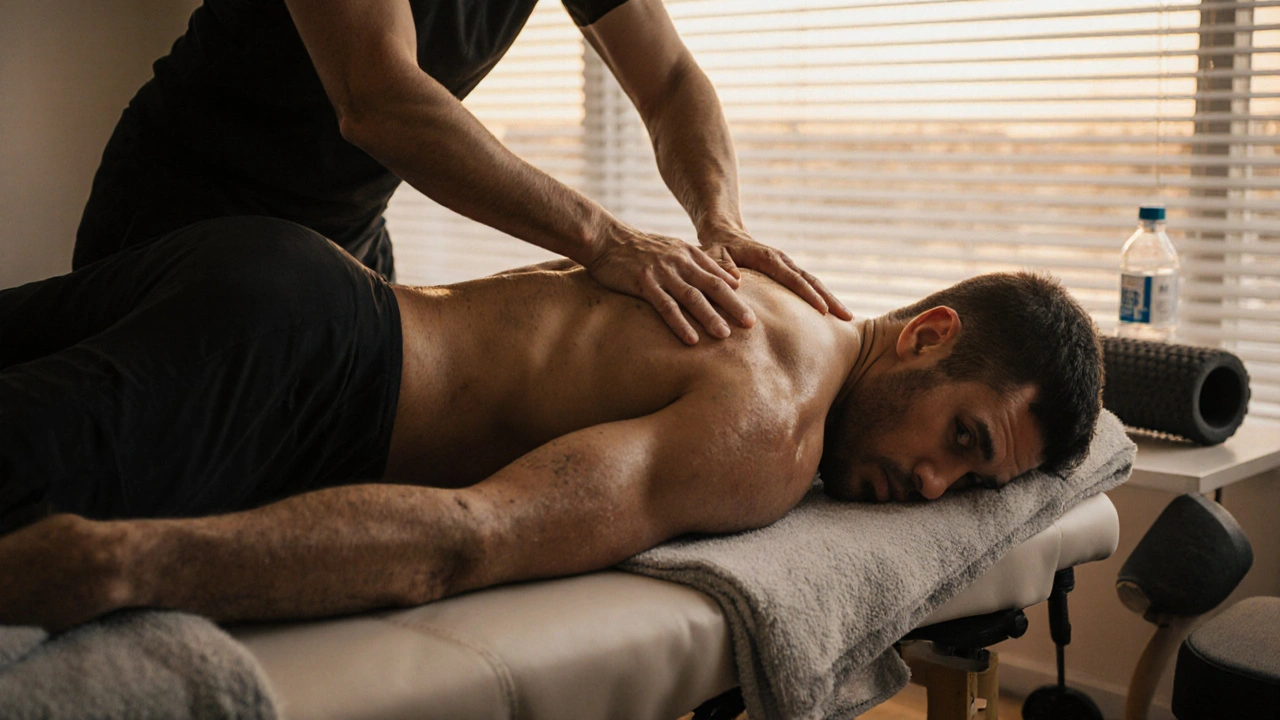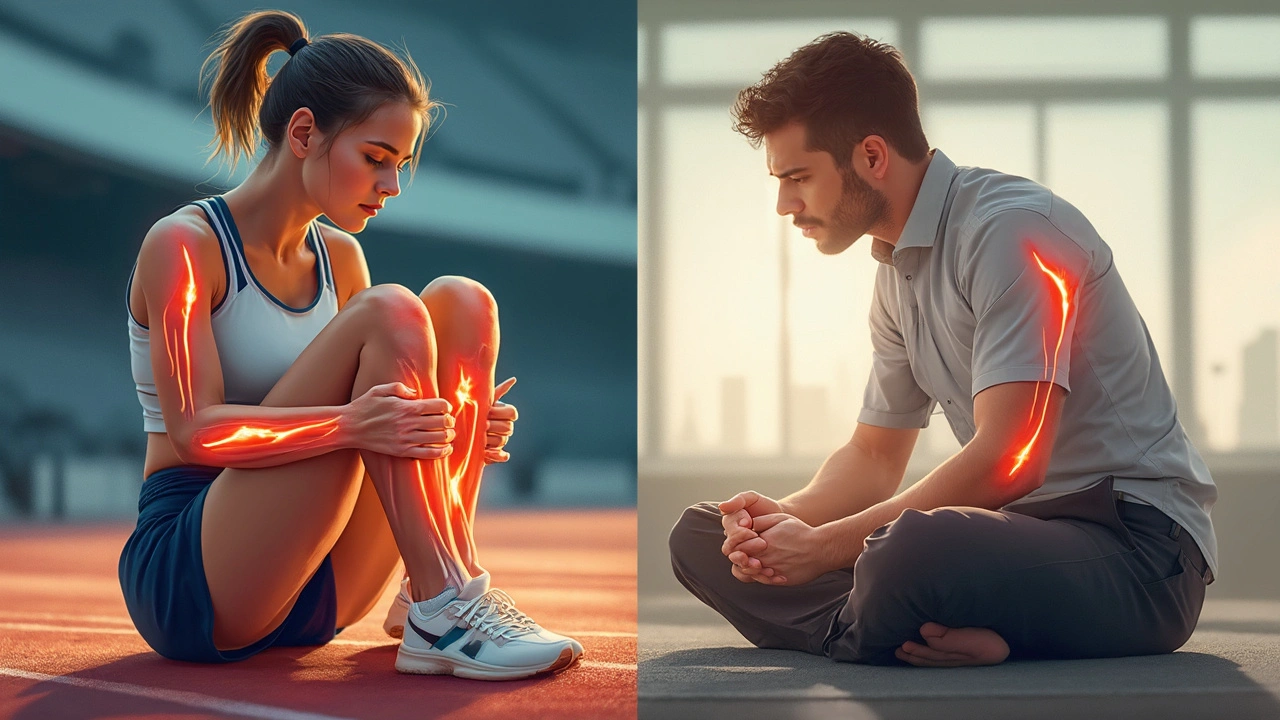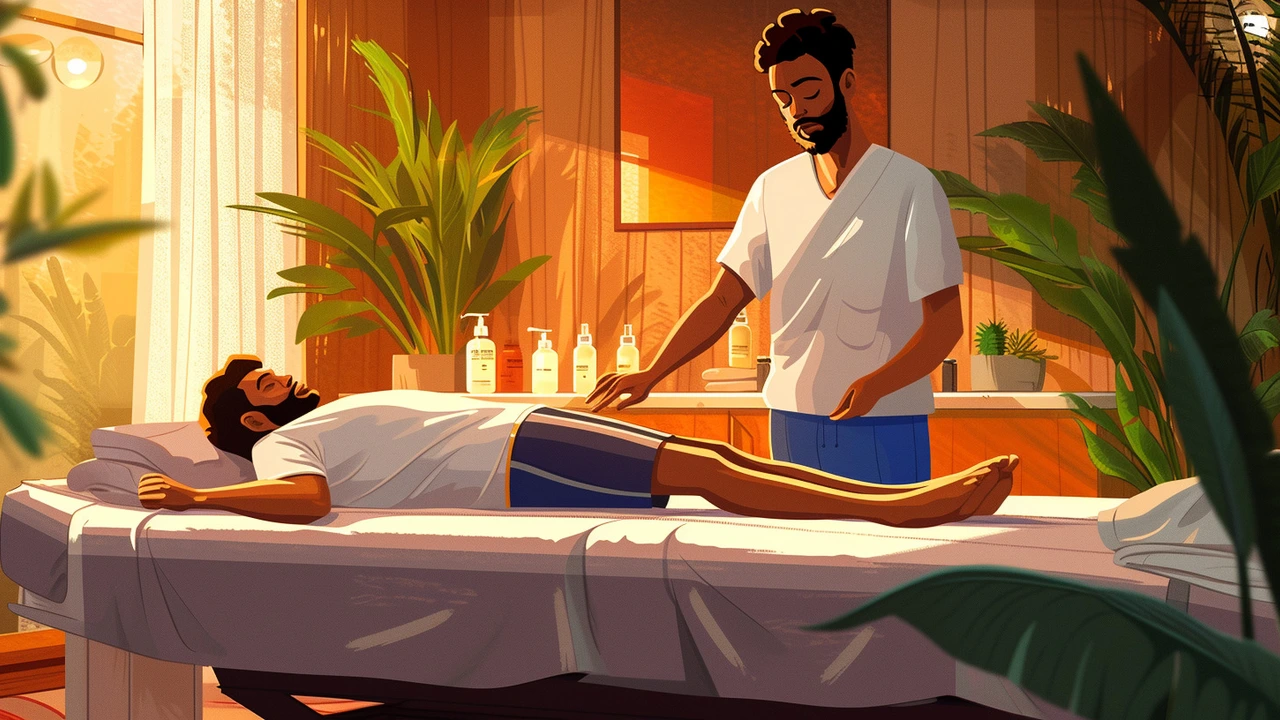Muscle recovery for dogs: fast, safe ways to help sore muscles
If your dog limps after a run or seems stiff after play, muscle recovery matters. Quick action and simple daily habits cut healing time and stop small problems from turning into major ones. Below are practical steps you can do at home and clear signs when to call your vet or a canine massage pro.
Quick post-activity steps
Right after activity: offer water and let your dog rest in a calm spot. Cool down by walking 5–10 minutes at a slow pace—this helps clear built-up lactic acid. Use a cool compress for 10–15 minutes on swollen areas, but never apply ice directly to skin.
Gentle massage for 5–10 minutes can reduce tightness. Use long, soft strokes along the muscle direction and avoid strong pressure on the spine or joints. If your dog shows pain, yelps, or pulls away, stop. For targeted problems, trained canine massage therapists use myofascial release and trigger-point work; those approaches need professional guidance.
Build a simple recovery routine
Daily habits speed repair. Feed a balanced diet with enough protein for tissue repair—about 18–25% protein for most adult dogs, higher for working or sporting dogs. Add omega-3s (fish oil) at vet-approved doses to reduce inflammation. Keep hydration steady: offer fresh water after exercise and during warm weather.
Stretching helps but keep it gentle. Short, controlled range-of-motion movements prevent stiffness; hold each stretch for 5–10 seconds and repeat 2–3 times. Avoid aggressive stretching—dogs don’t stretch the same way humans do.
Use heat and cold wisely. Cold reduces swelling in the first 48–72 hours after injury; heat loosens muscles before a light session of mobility work. Limit heat to 10–15 minutes and always check the skin for overheating.
Manage activity: swap high-impact play for slow walks or swimming while healing. Swimming is great because it keeps muscle work without excess joint load. Gradually increase intensity over 7–14 days rather than jumping back to full activity.
Consider supportive gear like compression wraps only on short-term, vet-approved use. For serious athletes, regular sports massage once every 2–4 weeks helps performance and prevents recurring tightness.
Watch for red flags: persistent limp beyond 48–72 hours, swelling that grows, heat and pain at the site, loss of appetite, or sudden behavioral change. Those signs mean see your vet. If pain is chronic but mild, neuromuscular massage and myofascial release with a qualified therapist can target stubborn trigger points safely.
Small steps add up. A calm cool-down, gentle massage, smart nutrition, and gradual return to exercise reduce recovery time and protect your dog from repeat injuries. When in doubt, call a vet or a certified canine massage therapist—hands-on help beats guesswork for sore muscles.
Track recovery: note daily steps, range of motion, appetite. Proper sleep and short naps help repair. Avoid overuse—slowly increase walks by 10% per week. Don't give human painkillers; only use meds your vet prescribes. Small monitoring actions prevent big setbacks and keep your dog active longer.

How Sports Massage Boosts Athletic Performance and Recovery
Sports massage isn't just for pros-it boosts recovery, reduces soreness, and improves movement for anyone who trains hard. Learn how targeted massage enhances performance and prevents injury.

Cross Fibre Release: Incredible Benefits You Never Knew About
Cross fibre release is a hands-on technique aimed at breaking up scar tissue and easing stubborn knots in muscles. This article unpacks how it works and why so many athletes and desk workers swear by it. You’ll discover surprising health benefits, practical tips for trying it yourself, and mistakes to avoid. Whether you struggle with chronic pain or just want to move better, these insights will change how you approach muscle care.

Cross Fibre Release: Revolutionizing Pain Management Techniques
Cross Fibre Release is an innovative technique in pain management that offers a new way to alleviate chronic discomfort and improve muscle recovery. By focusing on targeted massage methods, it provides a deep level of care that can often outperform traditional practices. This article delves into the principles behind Cross Fibre Release and offers practical tips for integrating this approach into everyday wellness routines.

Unlocking the Performance Edge with Sports Massage Therapy
Discover the world of sports massage – far exceeding the stereotype of pampering luxury, this targeted therapy can be a game-changer for anyone leading an active lifestyle. From boosting athletic performance to accelerating recovery times, sports massage has proven to offer tangible benefits. Learn how this treatment can help prevent injuries, relieve muscle tension, and improve overall wellbeing, plus get tips and insights into making the most of your sessions.

How Rolfing Can Improve Your Mental Health
Aug, 8 2023



